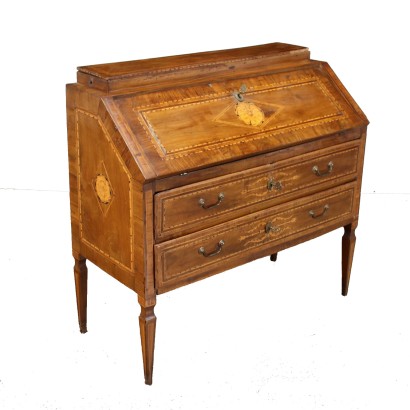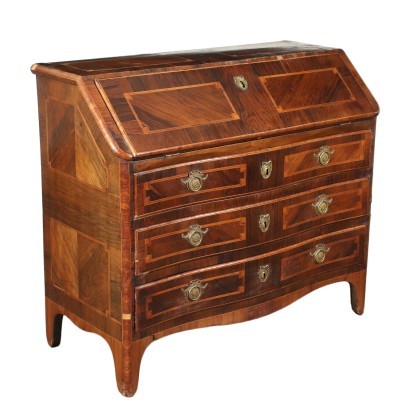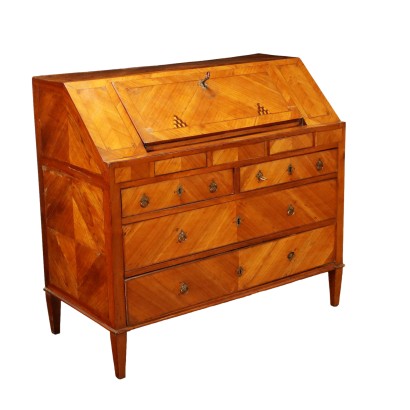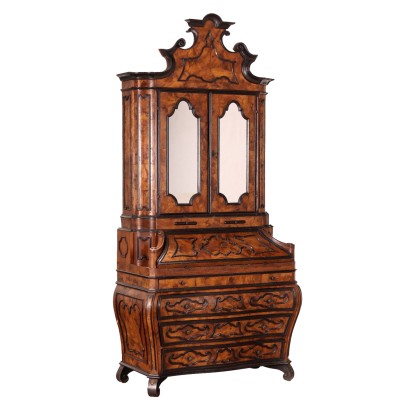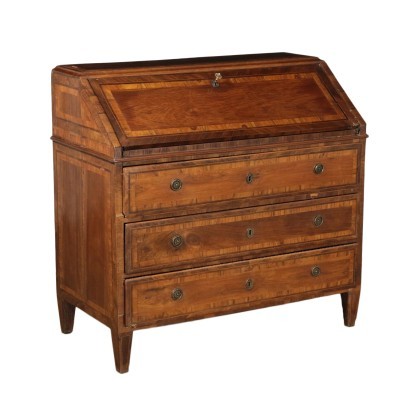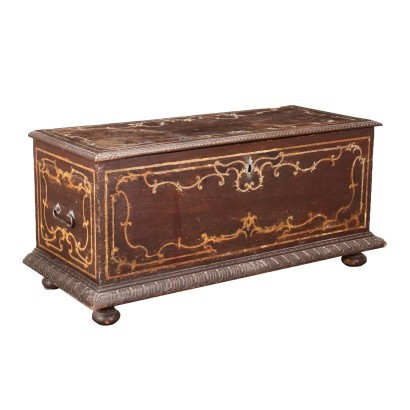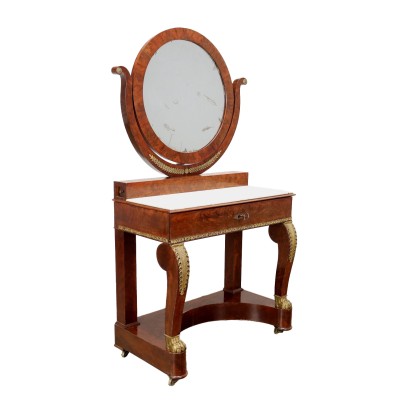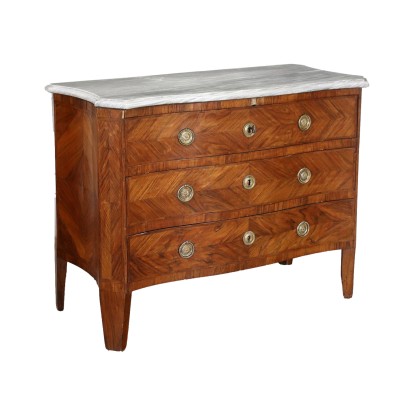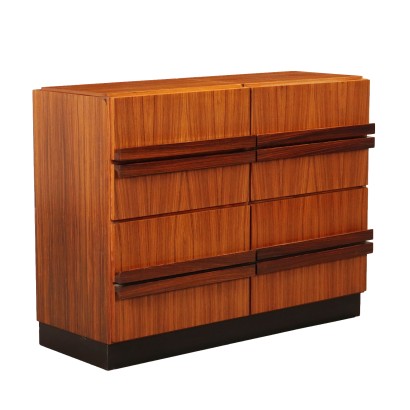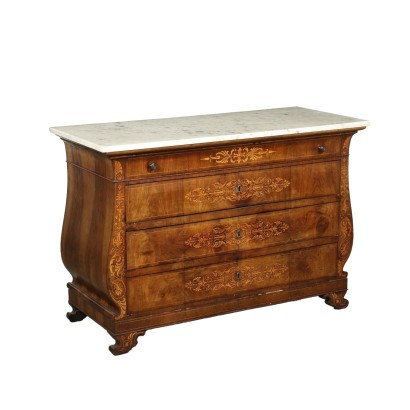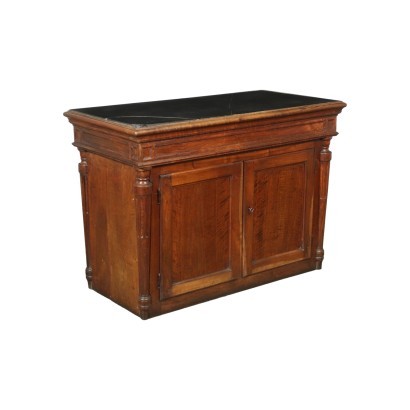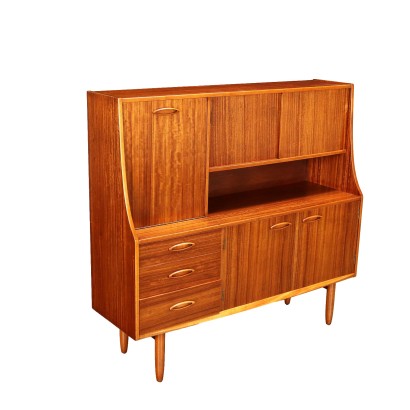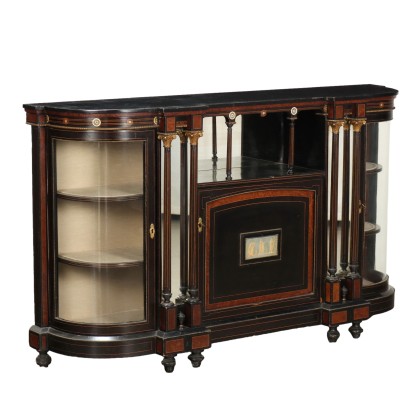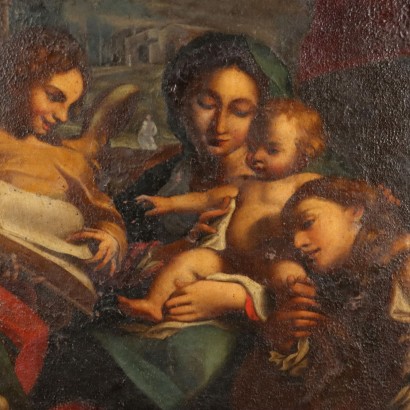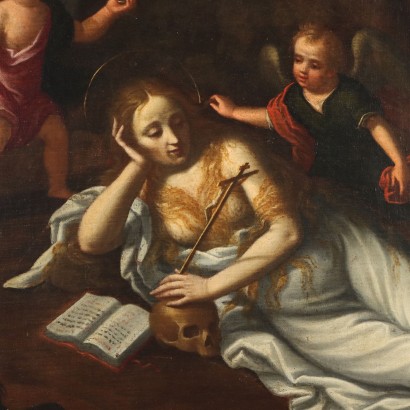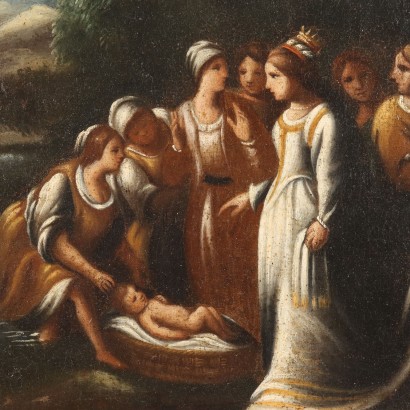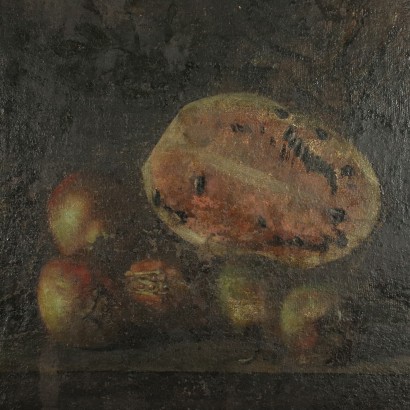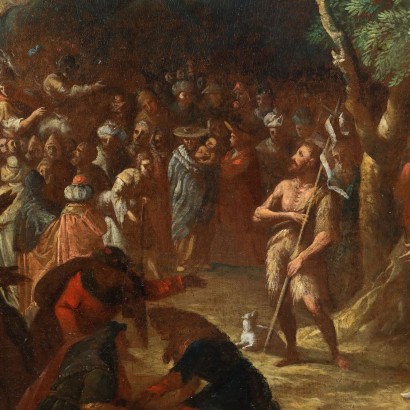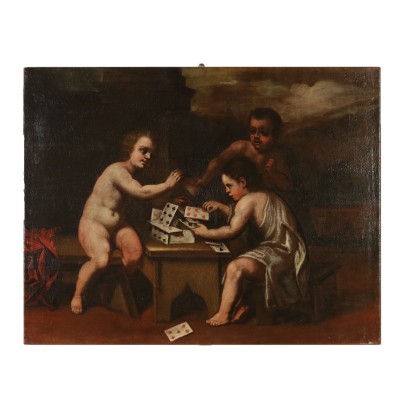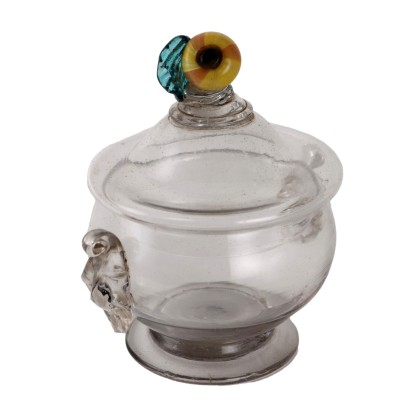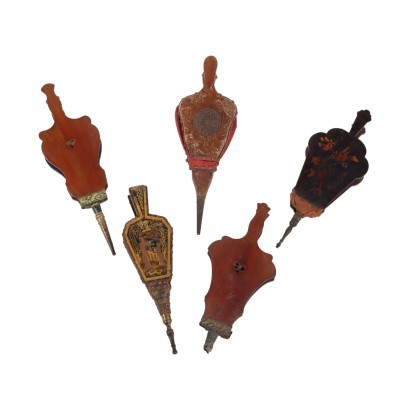Ancient Neo-Classical Flap Cabinet Walnut Piacenza '700 Writing Desk - Piacenza Last Fourth XVIII Century
Features
Piacenza Last Fourth XVIII Century
Style: Neo-Classical (1765-1790)
Age: 18th Century / 1701 - 1800
Origin: Piacenza, Emilia Romagna, Italy
Main essence: Maple , Walnut , Poplar , Oak
Description
Neoclassical flap in walnut, Piacenza last quarter of the 18th century. Upstand with pair of side drawers, flap door concealing a 4-drawer cabinet, pair of drawers on the front, tapered truncated cone legs. Entirely threaded in maple and inlaid with neoclassical motifs in maple, including rosettes, bellflower phytomorphic elements and geometric elements. Interior in poplar and oak. Changes and replacements.
Product Condition:
Product that due to age and wear requires restoration and resumption of polishing.
Dimensions (cm):
Height: 100
Width: 103,5
Depth: 47
Additional Information
Style: Neo-Classical (1765-1790)
This historical period includes a first phase that can be properly defined as the Louis XVI style.nOnly at a later time, with the maturation of archaeological fashions, was a new vision of furnishing civilization formulated and codified, now fully attributable to the Neoclassical Style.
In fact, both trends coexisted in unison until the last years of the eighteenth century.
nIn the field of cabinet making, the Directoire, Retour d'Egypte, Consular and Empire styles also fall within the neoclassical era.
nFind out more about Neoclassicism with the insights from our blog...
n
Age: 18th Century / 1701 - 1800
18th Century / 1701 - 1800Main essence:
Maple
Hard, light wood used for inlays. It grows mainly in Austria, but it is widespread throughout the northern hemisphere, from Japan to North America, passing through China and Europe. It is one of the lightest woods ever, tending to white, it is similar to lime or birch wood. The briar is used in the production of ancient secretaires .Walnut
Walnut wood comes from the plant whose botanical name is juglans regia , probably originally from the East but very common in Europe. Light or dark brown in color, it is a hard wood with a beautiful grain, widely used in antique furniture. It was the main essence in Italy throughout the Renaissance and later had a good diffusion in Europe, especially in England, until the advent of mahogany. It was used for solid wood furniture and sometimes carvings and inlays, its only big limitation is that it suffers a lot from woodworm. In France it was widely used more than anything else in the provinces. In the second half of the eighteenth century its use decreased significantly because mahogany and other exotic woods were preferred.Poplar
Essence considered "poor", it is a white wood, with yellowish or greyish shades, light and tender, which is easily damaged. It is used for rustic furniture or in the construction of furniture. The most valuable use it has had in the history of furniture is in Germany, in the 19th century, for veneers and inlays in the Biedermeier period.Oak
Under the name of oak or oak various types of woods derived from plants of the genus quercus are grouped. They are always resistant, hard and compact woods. Oak is lighter than oak, both are used for more rustic furniture or for the interiors of French and English antique furniture. In other processes it was gradually replaced by the advent of exotic woods considered more valuable since the 18th century.Other customers have searched:
Ribalte, trumeau, bureau, ribalta con alzata, cassettiera con ribalta, scrittoio, secretaire, stipo..
Dai un'occhiata anche ai nostri approfondimenti sul blog e alle presentazioni dei prodotti FineArt:
Leggi di più
Un cassettone a ribalta, espressione del gusto veronese di pieno Settecento
Secrétaire, il mobile con i nascondigli
Scrittoio a dorso d'asino, Piacenza, metà XVIII secolo
Cassettone a ribalta, Roma, secondo quarto XVIII secolo
Ribalta a urna, Milano metà XVIII secolo
Secrétaire, Bottega Francesco Maggiolini, primo quarto XIX secolo
Secrétaire, “Bottega dei fondi verdi”, inizi XIX secolo
Trumeau con anta a ribalta, Queen Anne, Inghilterra 1705 ca.
Sull'antiquariato in generale dai un'occhiata anche a:
Classic Monday: da un pezzo dei nostri magazzini alla storia dell'antiquariato
L'antiquariato dalla A alla Z: il Dizionario dell'Antiquariato
Il dizionario dell'antiquariato - Lastronatura
Il dizionario dell'antiquariato - Mascherone
Il dizionario dell'antiquariato - Natura morta
Il dizionario dell'antiquariato - Opificio
Il dizionario dell'antiquariato - Pastiglia
Il dizionario dell'antiquariato - Savonarola
Il dizionario dell'antiquariato - Rosone
Leggi di più
Un cassettone a ribalta, espressione del gusto veronese di pieno SettecentoSecrétaire, il mobile con i nascondigli
Scrittoio a dorso d'asino, Piacenza, metà XVIII secolo
Cassettone a ribalta, Roma, secondo quarto XVIII secolo
Ribalta a urna, Milano metà XVIII secolo
Secrétaire, Bottega Francesco Maggiolini, primo quarto XIX secolo
Secrétaire, “Bottega dei fondi verdi”, inizi XIX secolo
Trumeau con anta a ribalta, Queen Anne, Inghilterra 1705 ca.
Sull'antiquariato in generale dai un'occhiata anche a:
Classic Monday: da un pezzo dei nostri magazzini alla storia dell'antiquariato
L'antiquariato dalla A alla Z: il Dizionario dell'Antiquariato
Il dizionario dell'antiquariato - Lastronatura
Il dizionario dell'antiquariato - Mascherone
Il dizionario dell'antiquariato - Natura morta
Il dizionario dell'antiquariato - Opificio
Il dizionario dell'antiquariato - Pastiglia
Il dizionario dell'antiquariato - Savonarola
Il dizionario dell'antiquariato - Rosone



